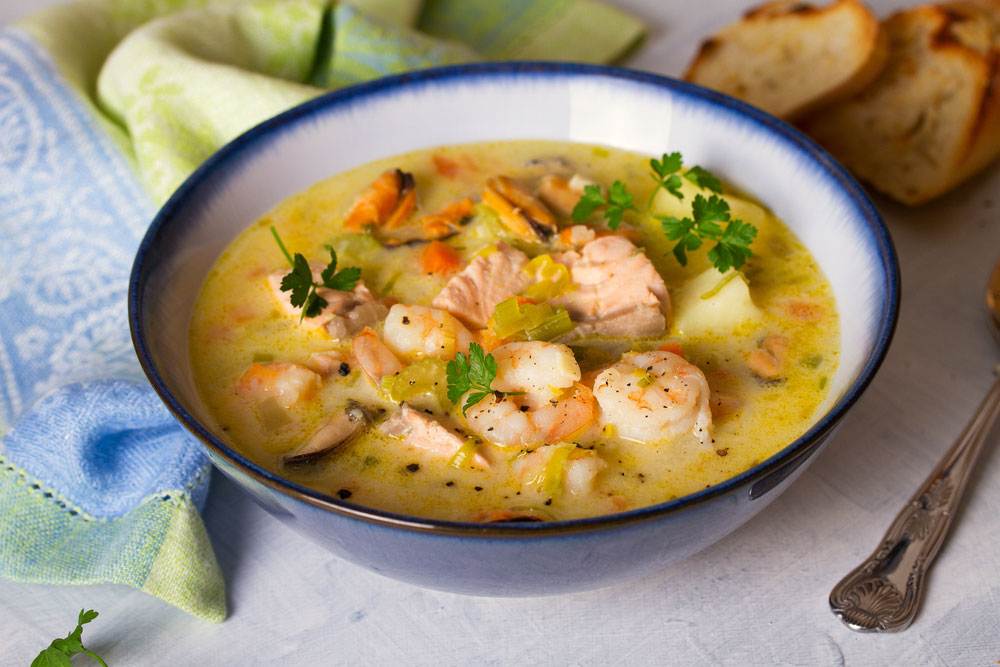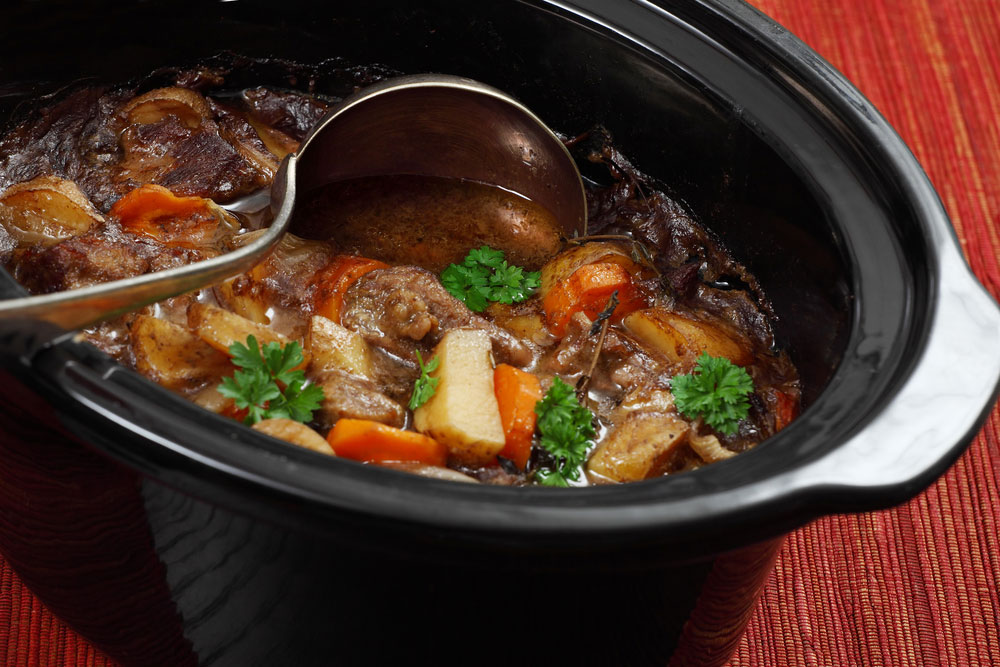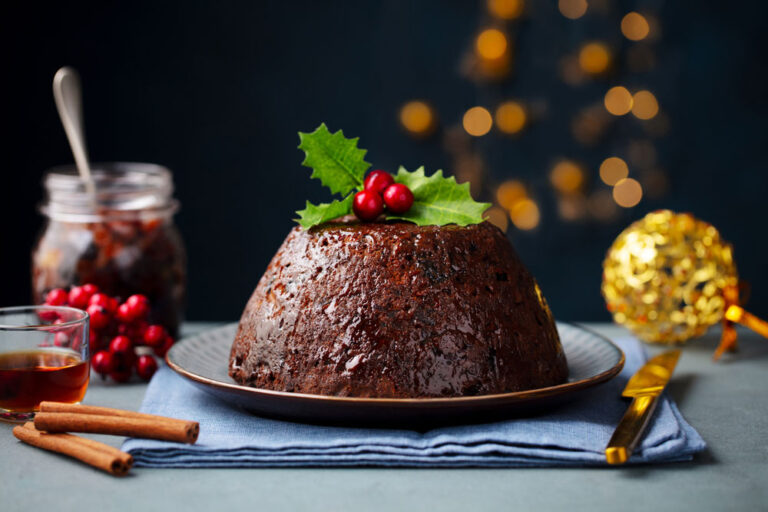The Rich Tapestry of Irish Cuisine
Many of us associate Irish cuisine with robust stews, tender pieces of meat, and, of course, a nicely poured pint of Guinness. While these pillars are undeniably important to Irish food culture, there is a hidden treasure in the culinary landscape that frequently goes unnoticed: the amazing way Irish cuisine varies with the seasons.
Ireland, with its lush, verdant landscapes and mild temperature, is a gastronomic destination where seasonal ingredients take center stage. Each season provides a new and varied mix of ingredients, flavors, and customs that have influenced how the Irish cook and eat.
The Season of New Beginnings: Spring’s Awakening
Spring ushers in a vivid metamorphosis of the gastronomic landscape in Ireland’s emerald land. Irish cuisine undergoes a beautiful transition when the earth awakens from its winter slumber, welcoming the arrival of fresh, sensitive ingredients that represent new beginnings.
Early Signs of Spring
Early spring in Ireland is marked by the arrival of wild garlic, often known as “ramsons.” This aromatic and vivid green plant thrives in forests and along riverbanks. During this season, the Irish have a long practice of foraging for wild garlic, which is typically used to make tasty and aromatic foods like wild garlic pesto and soups. Its spicy, garlicky scent gives traditional recipes a distinctive edge.
Greens that are both fresh and delicate
Gardens and fields burst to life with a cornucopia of fresh, fragile vegetables as the days lengthen and the earth warms. Fresh peas, asparagus, and spring onions are featured prominently in a variety of meals. These components are known for their crispness and natural sweetness, making them ideal for early spring cooking.
Lamb: A Springtime Favorite
Lamb is a beloved component in Irish cuisine that reflects the spirit of spring. Spring lambs are sought after for their soft meat and mild flavor. Roast lamb is traditionally served as part of Easter Sunday meal in rural Ireland, representing the regeneration of life. Roast lamb, commonly served with mint sauce and fresh vegetables, is a time-honored custom that continues to bring families together.
Combination of Tradition and Innovation
Chefs and household cooks alike are embracing the seasonal bounty of spring with a new viewpoint in modern Irish food. Traditional meals such as colcannon, mashed potatoes with young spring cabbage, and Irish stew with a spring twist, which includes brilliant green peas, have remained popular. However, new variations of these classics are emerging, adding varied global flavors while retaining the essence of seasonal Irish ingredients.
As spring emerges in Ireland, it brings forth an array of fresh, vibrant ingredients and traditions that captivate the senses. The beauty of this season lies in the balance between honoring time-honored recipes and experimenting with new flavors, ultimately celebrating the unique and ever-changing nature of Irish cuisine.
Summer’s Bounty: A Colorful and Flavorful Feast
As spring gives way to summer, Ireland’s landscapes break forth with a riot of color and flavor. With a bounty of fruits and vegetables, a celebration of seafood, and the typical summer barbeques, this is the season when the Irish culinary scene truly shines. Join us as we travel through this abundant season of richness and variety.
Summer’s Vibrant Palette
Longer days and warmer temperatures turn the landscape into a vibrant tapestry of fresh produce. Summer gardens and farmers’ markets in Ireland are brimming with colorful delights. Sweet strawberries, tangy blackberries, and luscious blueberries fill lush green fields. Herbs like basil, rosemary, and thyme grow alongside vibrant heirloom tomatoes, peppers, and courgettes (zucchinis).
The Treasures of the Sea
During the summer, Ireland’s wide coastline delivers a bumper harvest of fish. Mussels, oysters, and salmon are in season, and seafood chowders and seafood platters may be seen on menus across the country. A trip to the beach isn’t complete unless you eat freshly caught fish and chips with crispy batter and flaky white fish, a perennial summer favorite.
Barbeques and dining al fresco
Summer in Ireland is synonymous with outdoor gatherings and barbeques. Friends and family gather to enjoy the sun and a variety of grilled treats. Grilled sausages, burgers, and marinated meats are joined by a slew of vegetable skewers, grilled corn on the cob, and vivid salads, resulting in a sensory overload of flavors and textures.
Seasonal Celebrations
Summer in Ireland is a season’s celebration, with an explosion of color and flavor that inspires both amateur cooks and professional chefs. Traditional dishes are given a summer twist by using sun-ripened produce, while contemporary recipes experiment with novel combinations and international inspirations. Irish food festivals, garden picnics, and coastal barbeques all become vibrant manifestations of this vivacious season.
Summer in Irish cuisine is defined by the freshest foods and the happy festivities that bring people together. As we enjoy the warmth and richness of summer, let us now journey into the heart of autumn, a season of comforting traditions and seasonal treasures in the Irish kitchen.

Autumn Harvest: A Season of Solace and Tradition
The landscape in Ireland changes dramatically as the calendar flips to October. The leaves turn golden and russet, and the air becomes crisper. In Irish cuisine, this is a season of warmth, comfort, and a return to tradition.
Harvesting the Bounty
Autumn is a time of plenty, where the harvest season brings a cornucopia of rich, earthy flavors. In gardens and fields, root vegetables like potatoes, carrots, and turnips are ready for the picking. Fruits such as apples and pears hang heavy on the branches. And in the wild, the forests reveal a treasure trove of mushrooms, particularly prized chanterelles and porcini.
Comforting Seasonal Dishes
As the weather cools, substantial, comforting foods take center stage. Colcannon, a popular Irish meal, combines creamy mashed potatoes with crisp cabbage or kale, and is sometimes served with melting butter. It’s the epitome of a dish that captures the essence of fall. On winter evenings, traditional Irish stews with bits of soft meat and vegetables warm the soul.
Apples in Abundance
Autumn’s bounty of apples leads to an array of delightful desserts. Apple pies, crisps, and tarts are baked with love, often spiced with cinnamon and nutmeg. Each bite carries the comforting essence of autumn.
Seasonal Spices and Flavors
Autumn brings out the best in spices like cinnamon, nutmeg, and allspice. These warm and aromatic tastes inject warmth into both sweet and savory meals. Baking and slow-cooking have become popular methods of cooking, filling kitchens with the alluring aromas of freshly baked bread, spiced cakes, and hearty stews.
Traditional Celebrations
Autumn traditions are observed all over Ireland. Samhain, the ancient Celtic holiday that marked the end of the harvest season and the start of winter, is still present in modern-day Halloween celebrations. Traditional Irish Halloween dishes include barnbrack, a fruitcake with hidden charms, and colcannon with buried coins, each of which represents a bit of good fortune for the person who finds it.
Autumn is a season rich in traditions and a return to the comforts of substantial, nutritious meals in Ireland. The splendor of the autumn harvest is celebrated via both time-honored recipes and creative concoctions that highlight the beauty and bounty of the season.
Winter’s Cozy Embrace: Irish Cuisine for the Cold Weather
Let us now delve into the culinary wonders of Ireland throughout the winter months. As the days grow shorter and the temperatures drop, Irish food changes to provide comfort, warmth, and hearty nourishment.
Dishes that are both cozy and filling
Winter in Ireland necessitates foods that are both nourishing and comforting. Traditional Irish stews, with soft meat, root vegetables, and aromatic herbs and spices, take center stage. These hearty concoctions are frequently served with a slice of freshly made Irish soda bread, forming a comfortable duet that has been passed down through generations.
Seafood Specialties
Despite the temperature, winter is still a great season to enjoy seafood. Chowders are rich and creamy, overflowing with fresh fish, mussels, and seafood. The Irish beaches continue to deliver a plentiful catch, and winter is no exception, with oysters and other treasures being discovered in cold, pure seas.
Christmas customs
In Irish cuisine, the holiday season has a special position. Traditional Christmas meals feature a roast turkey or ham as the main course, along with a mix of seasonal vegetables, cranberry sauce, and, of course, stuffing. Rich with dried fruits and spices, Irish Christmas pudding is frequently served with a substantial amount of brandy butter or custard.
Warming Beverages
Winter beverages are important in Irish culinary traditions. As the nights lengthen, a steaming cup of Irish coffee, made by combining rich coffee with Irish whiskey and cream, brings warmth and peace. Mulled wine and hot whiskeys are especially popular, providing a warm relief from the cold.
Baking for the Holidays
Baking takes on a special role during the winter season. Fruitcakes, mince pies, and shortbread cookies are lovingly prepared for holiday gatherings and celebrations. The sweet scent of freshly baked treats fills Irish homes, and these desserts are cherished symbols of the season.
As winter embraces Ireland, Irish cuisine adapts to provide comfort and delight to tables all around the country. This season offers a distinct and heartwarming gastronomic experience, from nourishing stews to exuberant holiday meals. This closes our trip through Irish food and seasonality, revealing the ever-changing tapestry of flavors and traditions that comprise the rich world of Irish cuisine.



